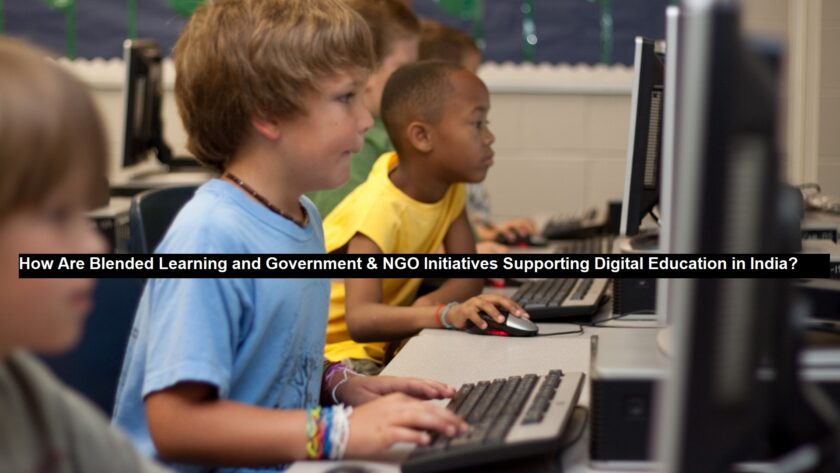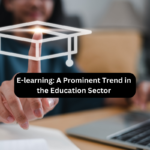India has been struggling for a long time to upgrade its educational system, especially in its rural areas. As pointed out by the Annual Status of Educational Report, very few students meet the expectation of reading like a second grader even though more than half of the village children are enrolled in schools. Supporting digital education initiatives can help combat losing faith in education by providing students with personalized learning experiences. This discrepancy is apparent in places where communities are faced with inadequate infrastructure and a lack of quality education opportunities. Digital education has helped to address this urgency. The implementation of online platforms and other digital channels has broken spatial barriers. This has not only connected deprived ones with the outer world but also helped them access higher education and skill development for the long run.
Read: Common Mistakes Students Make in Academic Writing and How Professional Help Can Fix Them
Understanding the role of the government and NGOs through real-live initiatives
Experts opine that digital education in rural areas stands on the three pillars – government, society, and market. In India, government initiatives like DIKSHA, PM e-Vidya, and SWAYAM are aimed at transforming the country into a digitally empowered society. PM e-Vidya offers high-quality education through DTH channels and online platforms. Similarly, DIKSHA provides QR-coded textbooks and content for school students. Till July 2023, the program has provided more than 524 crores of learning periods. It bears around 3,17,496 pieces of e-contents that are live and have more than 2.2 crore average page hits daily.
SWAYAM is a national MOOC platform with credit transfer provisions that has numerous self-paced higher education courses that students can enroll in to add knowledge and develop skills. NCERT and NIOS are the national coordinators for schools under SWAYAM. They provide 9-12th standard courses. There are 10,451 courses available on the site. NCERT and NIOS hold 4.1 lakh, and 34 lakh students registered, respectively. The government is also providing subsidies for smartphones and affordable internet access for marginalized communities.
NGOs are also important forces in spreading education and online connectivity for rural students. These organizations have worked closely with localities and have provided huge support for digital literacy in remote locations. Akansha Foundation’s School on Wheels is a mobile unit model that delivers educational resources directly to remote communities. A strong Parent-Student Relationship is crucial for fostering a positive and effective learning environment in the context of digital education. They include both academic and professional training materials, making the most underprivileged students ready to join the workforce. Learning Equality’s Kolibri Platform provides interactive content.
eVidyaloka prepared a learning model aligning rural content and limitations. The learn-from-home multi-modal process allowed us to bridge the learning gap. As the Internet and availability of smartphones were a major problem for the students, a multi-modal delivery approach was started to reach rural children with help from their Program Class Assistant.
In this, pre-recorded videos were shown to explain conceptual aspects. Simultaneously, live classes were conducted through video conferencing apps. In June 2020, they added a new program to teach through television. The worksheet model was also adopted for students without smartphones as an added tool to emphasize learning concepts. Teachers also share important links to missed classes or homework using various communication channels. The multipurpose usage of chats, live classes, screenshot-sharing submissions, and worksheet modules has created a huge opportunity for rural students to learn. The delivery coordinators and integration partners played a significant role in escalating and maintaining the process. At present, the LFH model has reached over 180 villages.
Blended learning enabled personalization and greater flexibility
Digital platforms provide rural students with lectures, instant resources, and interactive content. Blended learning is one of the most effective ways through which students’ individual needs are catered. This mode of learning is especially effective in rural areas where there is a dearth of qualified teachers. The Impact of Digital Forms on supporting digital education is significant, streamlining administrative tasks, improving data accuracy, and enabling faster communication between students, teachers, and parents. It helps the students learn at their own pace through adaptive software and personalized digital content. Umar Ahmad Ganie scored an impressive 601 in the NEET exam using a borrowed phone to attain Physics Wallah’s online course. Coming from a remote place with an electricity shortage and doing manual labor, Umar’s is an inspiring story of how blended learning can help rural students achieve their dreams.
Mckinsey points out that effective digital education can increase India’s GDP by up to $1 trillion by 2025. This mode of education also enables students to develop vocational skills and prepare for jobs using interactive simulations and problem-solving through online courses. According to the National Statistical Office, there has been a significant increase of around 50% in the number of enrolled students.
To sum up, the impact of digital education on rural communities in India is both transformative and multifaceted. It shows a way to a brighter future for millions of students by increasing access, improving quality, and empowering underprivileged communities. The pandemic has also accelerated the adoption of digital education in rural areas leading to the expansion of the digital education market in India. Moreover, collaborative undertakings involving government, NGOs, educators, and the community have been successful in bridging the inequality between rural and urban students. Consistent efforts are thus expected to bring a massive socio-economic change in rural India, paving the way for a more equitable and prosperous society.




